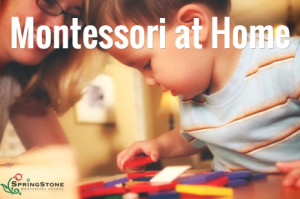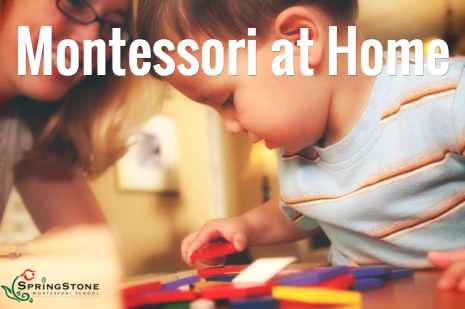Montessori at Home
 Bringing Montessori principles into your home can be a valuable bridge to what your child learns at school. Here are some tips from the American Montessori Society on ways to build that connection:
Bringing Montessori principles into your home can be a valuable bridge to what your child learns at school. Here are some tips from the American Montessori Society on ways to build that connection:
Create an ordered environment.
Having a place for everything, on a child-friendly scale, encourages both independence and self-discipline. Children know where to find what they need, and where to put it when they’re done. An ordered environment also has fewer distractions, allowing children to focus on the task at hand.
Teach real-life skills.
Young children, for example, can peel vegetables, fold their clothes, match their socks, and care for pets. “Tweens” can sort the mail and take out the recycling. And adolescents can prepare the family dinner, read to their younger siblings, help with computer maintenance and home repair, and manage their own bank account.
Promote concentration.
While your child’s work environment should be free of distraction, it doesn’t have to be away from family activity. Some children prefer working at the kitchen table or reading in a cozy corner of the living room to holing up in a bedroom or study. Observe your child’s response to various environments, ask questions, and make adjustments as needed.
Nurture inner motivation.
Children are most willing to apply themselves when they feel there’s intrinsic value to their work. Some parents use external rewards as motivation, but only pride and pleasure from within has lasting, and meaningful, effects.

